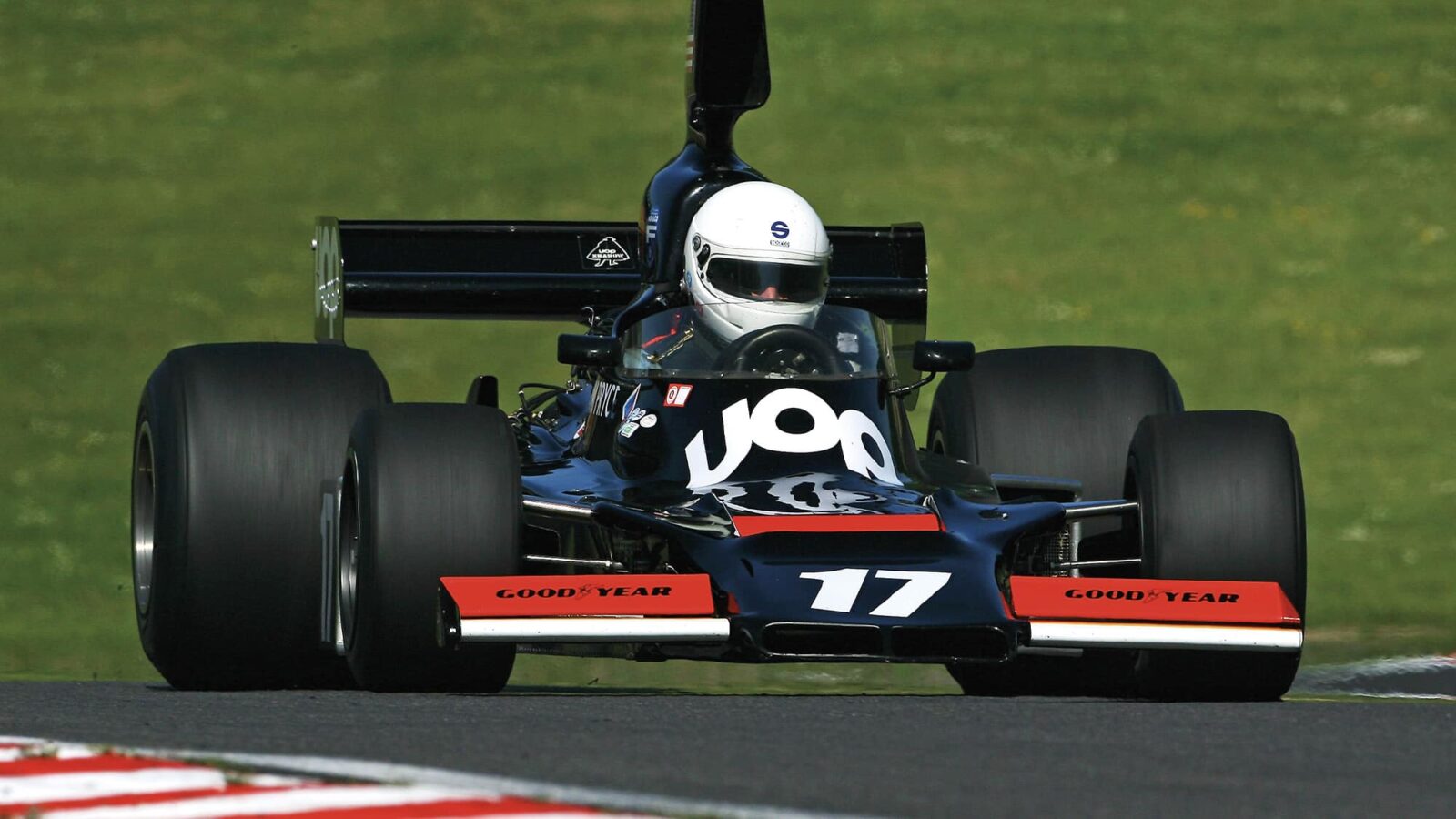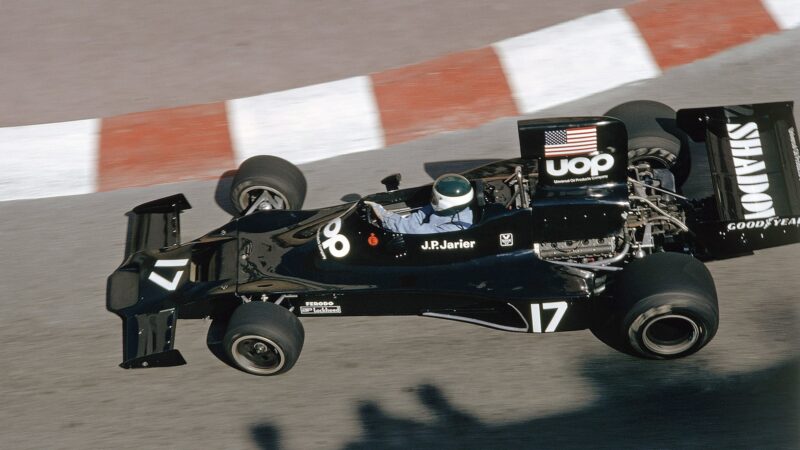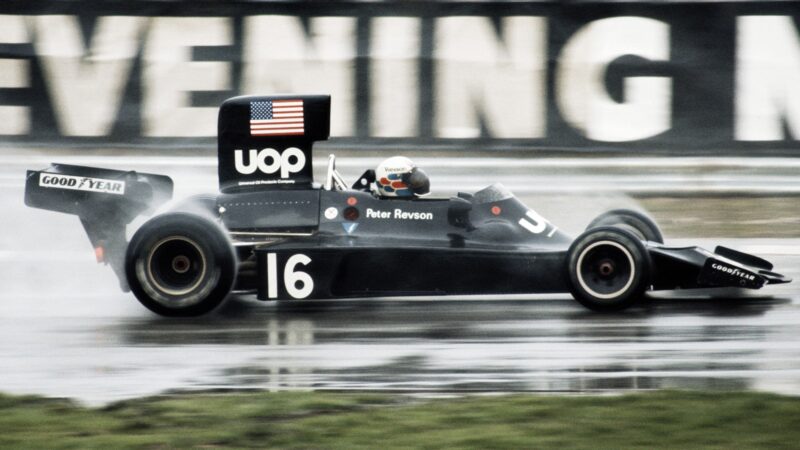Race car buying guide: Shadow DN3 and DN5
During a golden era for privateers in Formula 1, Shadow made its name with two impressive challengers, and now there is an opportunity to buy

Shadow left an inspiring legacy for privateers, and its cars, such as this DN5, race on in historics
Back in the 1970s, Formula 1 cars were built to last. It was common for smaller teams to use the same chassis for multiple years, often with just mild updates in beautiful simplicity. This was about building something with a shelf-life of more than 12 months, and Shadow was particularly good at it, showing many independent teams how to take on the big boys in a golden era of F1.
F1 was changing in the ’70s, particularly in terms of aerodynamic development as big hitters like Ferrari, Lotus, Tyrrell, McLaren, Brabham, BRM, March and more all grappled for the upper hand in best using air to boost performance. But while the shape of the cars was rapidly changing, the heart of them wasn’t.
This was the height of the Cosworth DFV’s power. The powerful, affordable and reliable engine coupled with the Hewland gearbox opened F1 up more than ever before. Anybody with pockets deep enough could buy the off-the-shelf powertrain and potentially be at the sharp end, provided they got their chassis right. And one of the first to get it right was Shadow.

The DN3 proved a step forward for Shadow, with Jarier (pictured in Monaco) joining in ’74
Formed in 1968 by Don Nichols, Shadow Cars rose to fame in Can-Am, starring after McLaren and Porsche left. Can-Am gave Shadow a footing, and in 1973 Nichols signalled its F1 entry with Universal Oil Products (UOP) backing. Nichols now needed an experienced designer and he signed up Tony Southgate.
The first F1 Shadow, the DN1, was basically built in Southgate’s shed. The car was fast but unreliable, largely due to excessive vibrations from its DFV rattling its components to bits. Regardless, there were podiums for both Jackie Oliver and George Follmer in the first season.
Production was moved back to America to provide greater resource, and the result was the DN3 – a greatly stiffened upgrade of the first car, boasting front- and side-mounted radiators, a distinctive air ram and a longer wheelbase.
To handle the new car, Shadow signed both Peter Revson and Jean-Pierre Jarier in a formidable line-up. Revson was given the sole DN3 that was ready for the start of 1974 and qualified the car fourth and sixth in the opening two races but was tragically killed after a suspension failure in testing for the South African GP. Jarier put in a great drive to finish third in Monaco while Brian Redman and Bertil Roos shared the seat opposite him until the arrival of promising Welshman Tom Pryce.

Revson took his Shadow-Ford DN3 to sixth in 1974 Race of Champions at Brands
For 1975, Southgate had a trick up his sleeve. Using the template of the DN3, he fitted inboard front suspension springs and made the car’s shape more efficient all round, tidying up the airflow around the cockpit and re-designing sidepods and radiator intakes.
The DN5 was a revelation at first with Jarier on pole for the opening two races in Argentina and Brazil. The car was quick but fragile. Jarier didn’t start in Argentina due to a gearbox failure and had a metering unit failure when he was leading in Brazil. Pryce took the British GP pole, but would then crash out.
Yet Pryce won the non-championship Race of Champions at Brands Hatch, his second DN5 outing, to record his and the DN5’s sole F1 win.
There was a world championship podium for Pryce in Austria, before the DN5’s profile was lightly remodelled into a B spec for 1976. Pryce finished on the podium in the season opener in Argentina but, while the reliability issues had been largely cured, the DN5’s pace advantage was lost in the development war, and that would be its final rostrum appearance.
Things went downhill for Shadow. Southgate left for Lotus, UOP withdrew, and the ’77 DN8 was tricky, then Pryce had his terrible accident in South Africa.
There was the ultimate high point of Alan Jones winning the Austrian GP – rather fortuitously after James Hunt’s McLaren engine failed – but that was the sole highlight of the team’s final few seasons in Formula 1.
Shadow was absorbed into Theodore Racing in 1980 after half of its staff left to form Arrows, and the team soon disappeared. Regardless, around 10 DN3 and DN5s survive, with a handful active in historic racing.
Market view
Not a sales regular, but now is a good time
Shadow DN3s don’t come to market often – it is thought that there are only four chassis left in existence, whereas six DN5s are still reportedly out there.
DN3-4A was advertised in 2001 in Canada for $89,900 and was then later advertised as part of a wider Shadow collection
in October 2010. At that time it was listed as having a value of $300,000, yet requiring around $150,000 of restoration work. Upon completion it was suggested that the value would be $450,000.
The exchange rate in 2010 resulted in an estimated price of £282,000. Adjusting that a decade on, and accounting for inflation, would bring it around £364,000 today. The ex-Tom Pryce 1974 DN3-B5 has been fully restored by Virtuoso Performance and is offered for sale in California for $595,000 (£455,000).
This would suggest a 25 per cent increase in prices over the past 10 years. For a usable historic F1 car fitted with the legendary Cosworth DFV we don’t feel that this is an unreasonable gain in today’s market.
Incidentally, the ex-Jean-Pierre Jarier DN3-2A is currently on offer through William I‘Anson, with price on application.
Robert Johnson, Classic and Sports Finance
Target deal
Shadow DN3: £360,000 – £450,000
